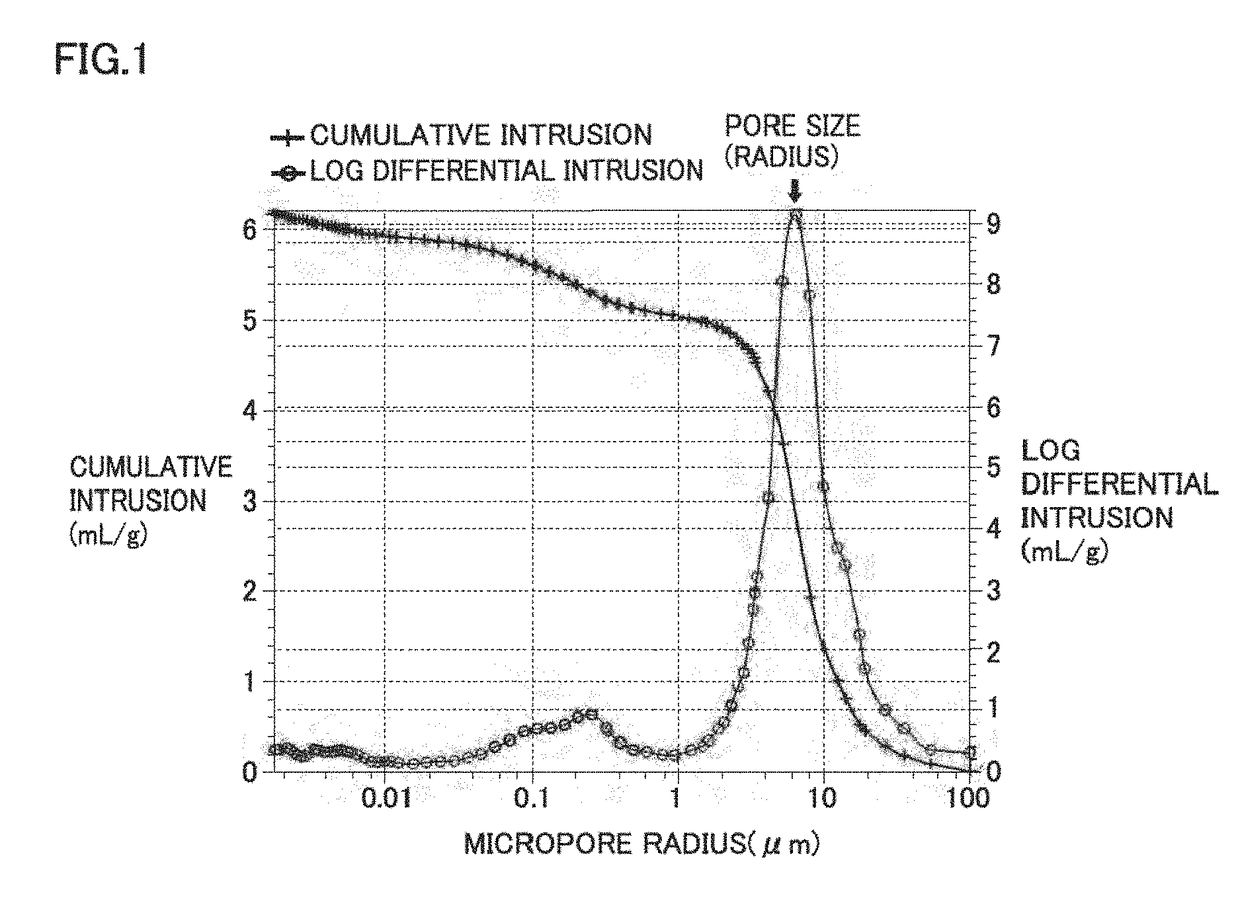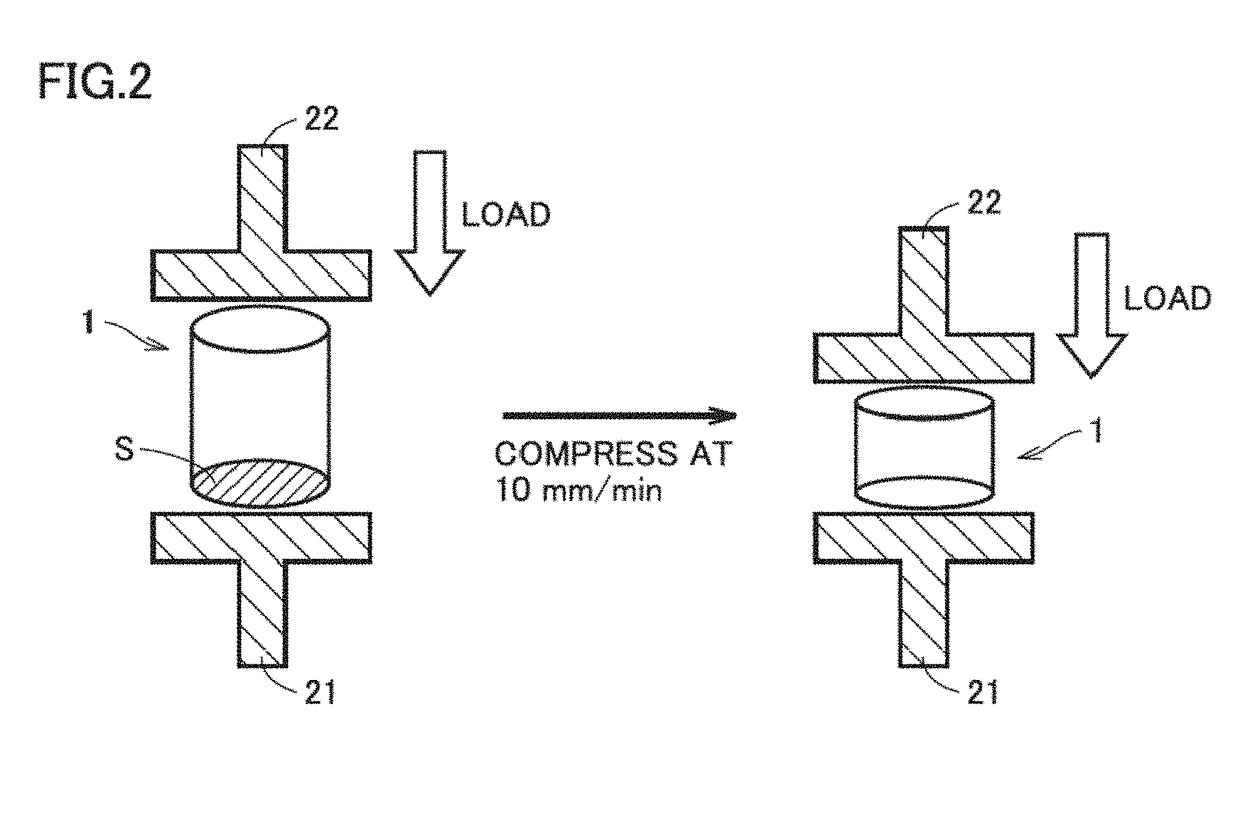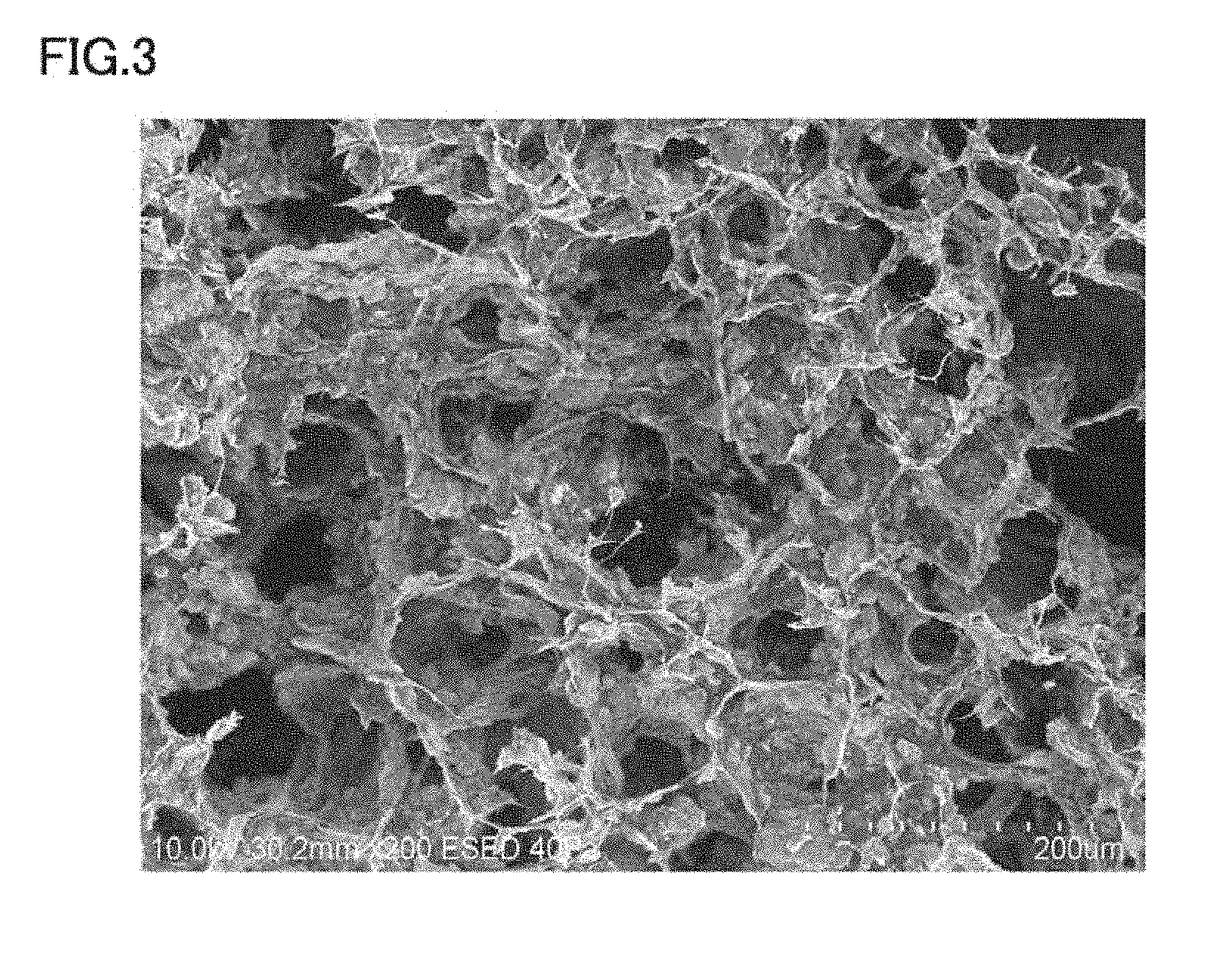Porous composite, bone regeneration material, and method for producing porous composite
a porous composite and bone regeneration technology, applied in the field of porous composites, can solve the problems of poor shape-imparting properties of ocp, difficult to apply ocp by itself to regenerate an extensive bone defect or the like, and achieve the effects of moderate compressive strength, high compressive strength, and good elasticity
- Summary
- Abstract
- Description
- Claims
- Application Information
AI Technical Summary
Benefits of technology
Problems solved by technology
Method used
Image
Examples
example 1
(1) Preparation of OCP
[0063]First, Solution 1 and Solution 2 for preparing OCP were prepared in the following manner.
[0064][Solution 1] In 2500 g of distilled water, 31.2 g of sodium dihydrogen phosphate dihydrate was dissolved to prepare Solution 1.
[0065][Solution 2] In 2500 g of distilled water, 35.2 g of calcium acetate monohydrate was dissolved to prepare Solution 2.
[0066]Then, Solution 1 was put in a separable flask, and the temperature was elevated to 70° C. by a mantle heater. Then, a stirring blade (blade diameter: 12 cm) was attached to a stirrer (MAZELA Z available from TOKYO RIKAKIKAI CO., LTD.), and Solution 2 was added dropwise to Solution 1 at a rate of about 28 mL / min under stirring at 250 rpm. After end of the dropping, the mixture of Solution 1 and Solution 2 was further stirred at 70° C., 250 rpm for 2 hours.
[0067]Then, the precipitate produced in the mixture was filtered through a membrane filter (pore size 3 μm, A300A293C, available from Advantec Toyo Kaisha Ltd....
examples 2 and 3
, and Comparative Examples 1 and 2
[0072]In Example 2, freezing of the product to be frozen was conducted by using liquid nitrogen at −196° C. In. Example 3, freezing of the product to he frozen was conducted by using methanol cooled to −40° C. In Comparative Example 1, freezing of the product to be frozen was conducted by using a freezer set at −80° C. In Comparative Example 2, freezing of the product to be frozen was conducted by using a freezer set at −20° C.
[0073]Porous composites (OCP / collagen composites) of Examples 2 and 3, and Comparative Examples 1 and 2 were obtained in the same manner as in Example 1 except for these points.
Measurement of Pore Size
[0074]For each cylindrical (tablet-shaped) sample having a diameter of 8.5 mm and a thickness of 1.5 mm obtained in Examples 1 to 3 and Comparative Examples 1 and 2, the pore size was measured in the following manner.
[0075]As a pretreatment, samples were dried at a constant temperature of 120° C. for 4 hours. For each sample afte...
PUM
| Property | Measurement | Unit |
|---|---|---|
| pore size | aaaaa | aaaaa |
| pore size | aaaaa | aaaaa |
| particle size | aaaaa | aaaaa |
Abstract
Description
Claims
Application Information
 Login to View More
Login to View More - R&D
- Intellectual Property
- Life Sciences
- Materials
- Tech Scout
- Unparalleled Data Quality
- Higher Quality Content
- 60% Fewer Hallucinations
Browse by: Latest US Patents, China's latest patents, Technical Efficacy Thesaurus, Application Domain, Technology Topic, Popular Technical Reports.
© 2025 PatSnap. All rights reserved.Legal|Privacy policy|Modern Slavery Act Transparency Statement|Sitemap|About US| Contact US: help@patsnap.com



